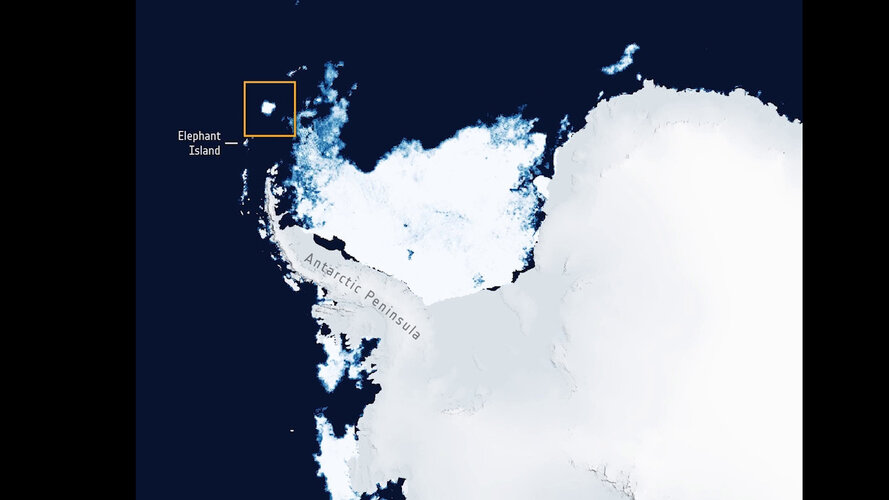In November 2023, the monster iceberg A23e finally dislodged from the seafloor after being grounded and stuck there for 40 years. A series of recent satellite images show that the mighty iceberg is now heading away from Antarctic waters, seeking fame and fortune in the high seas. A23a measures 4,000 sq kilometers in area and is over 280 meters thick, and is currently the world’s largest iceberg. Its first path will follow the Antarctic Circumpolar Current, heading towards South America.
Tiny Elephant Island, an ice-covered, mountainous island off the coast of Antarctica seen in the image above, has an area of only 215 sq km.
ESA’s Copernicus Sentinel-1 satellite and NOAA’s Advanced Microwave Scanning Radiometer 2 (AMSR2) onboard the GCOM-W1 satellite have been keeping an eye on the moving behemoth, which appears to be driven by winds and currents. Scientists estimate it is moving at a rate of about 4.8 km (3 miles) each day, but that could change as it enters the currents.
Iceberg A23a separated from the Fichner-Ronne ice shelf in West Antarctica in 1986. It was so big that it became grounded, stuck to the seafloor, and remained in position for 40 years. ESA said it is not unusual for icebergs to become grounded, but over time they shrink enough to become unground and float.

A23a is a biggie, but it’s not the largest ever. It is only about one-third the size of the biggest iceberg in recorded history, B-15 which calved off of Antarctica’s Ross Ice Shelf in 2000. The B-15 iceberg covered more than 10,878 square km (4,200 square miles) when it broke away, according to NASA’s Earth Observatory. B-15 has since fractured into numerous smaller bergs, and most have melted away.
Like many icebergs before it, A23a is being propelled it towards the South Atlantic along a trajectory commonly referred to as ‘iceberg alley’, because of the Antarctic Circumpolar Current.

